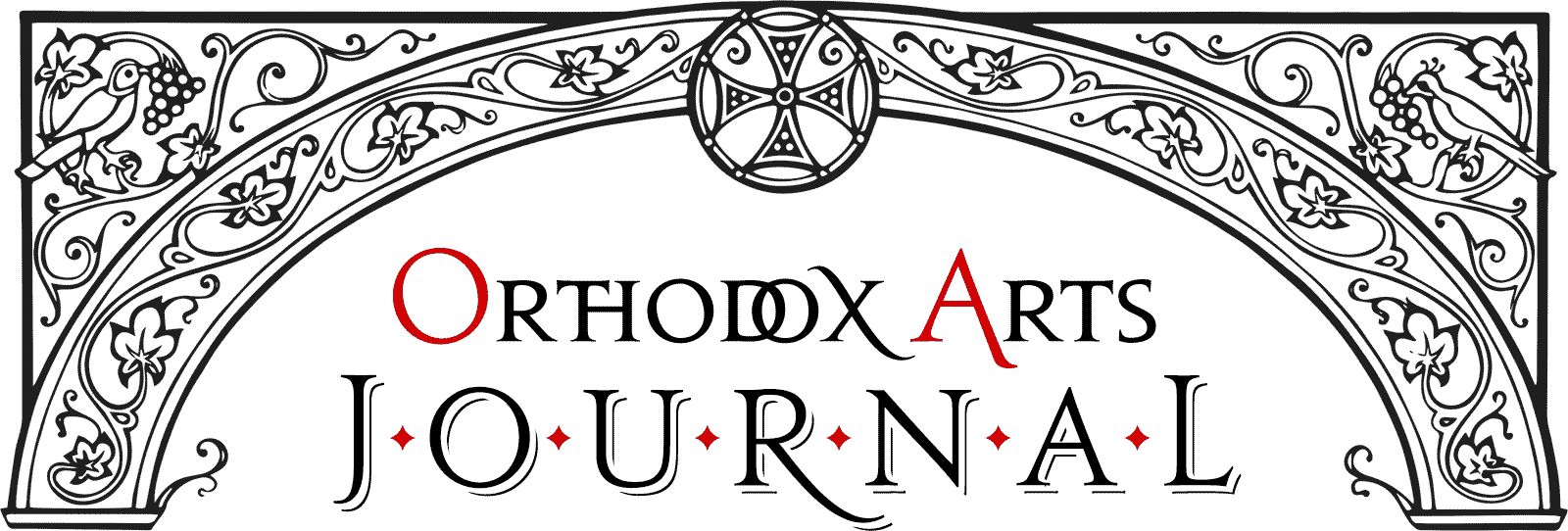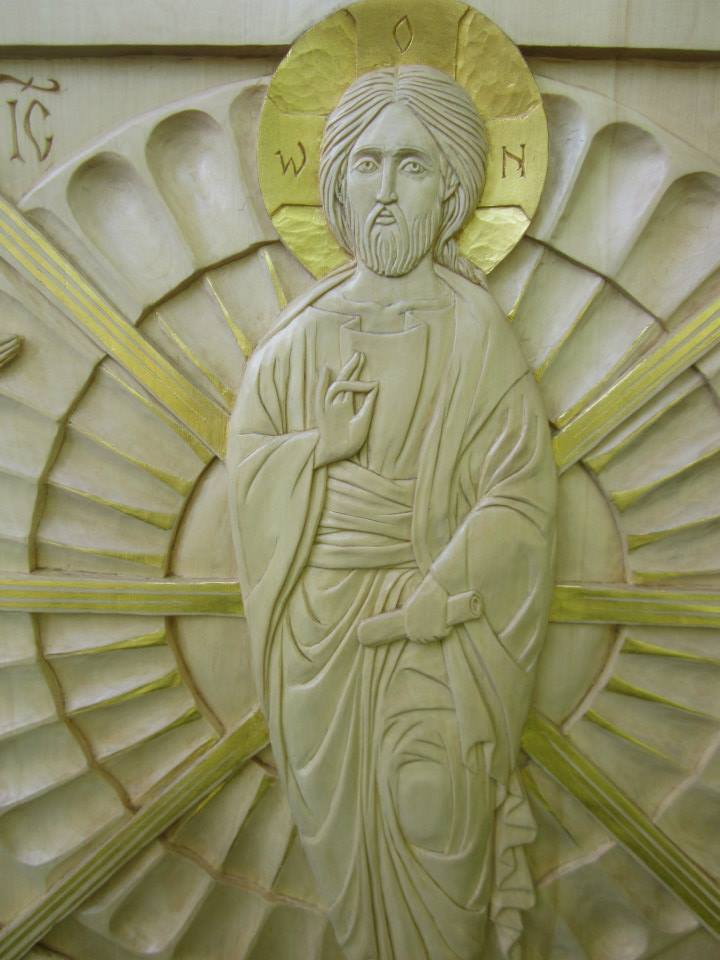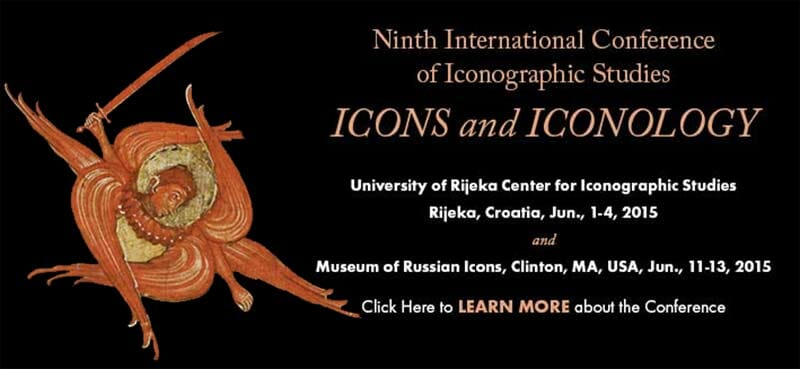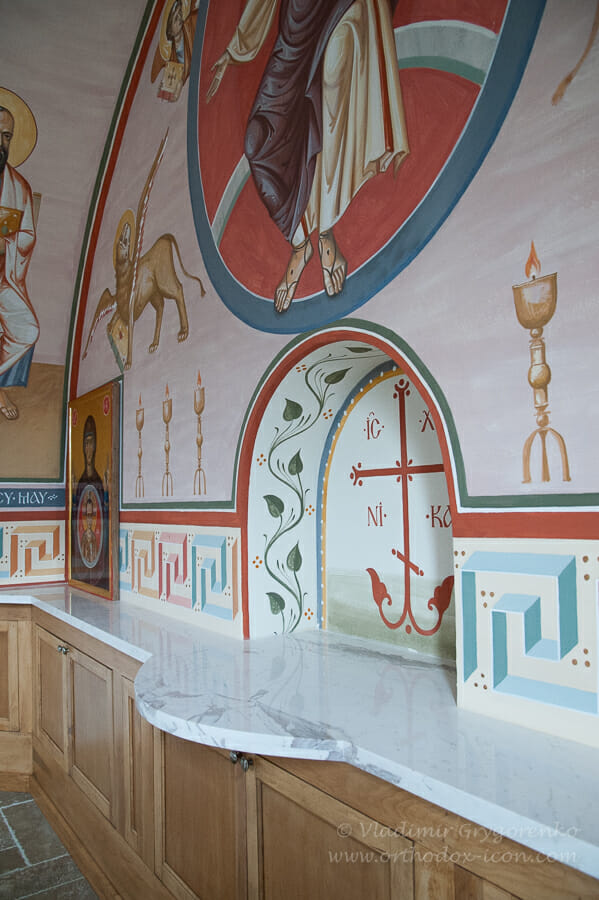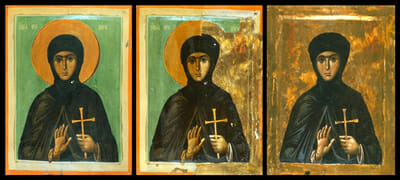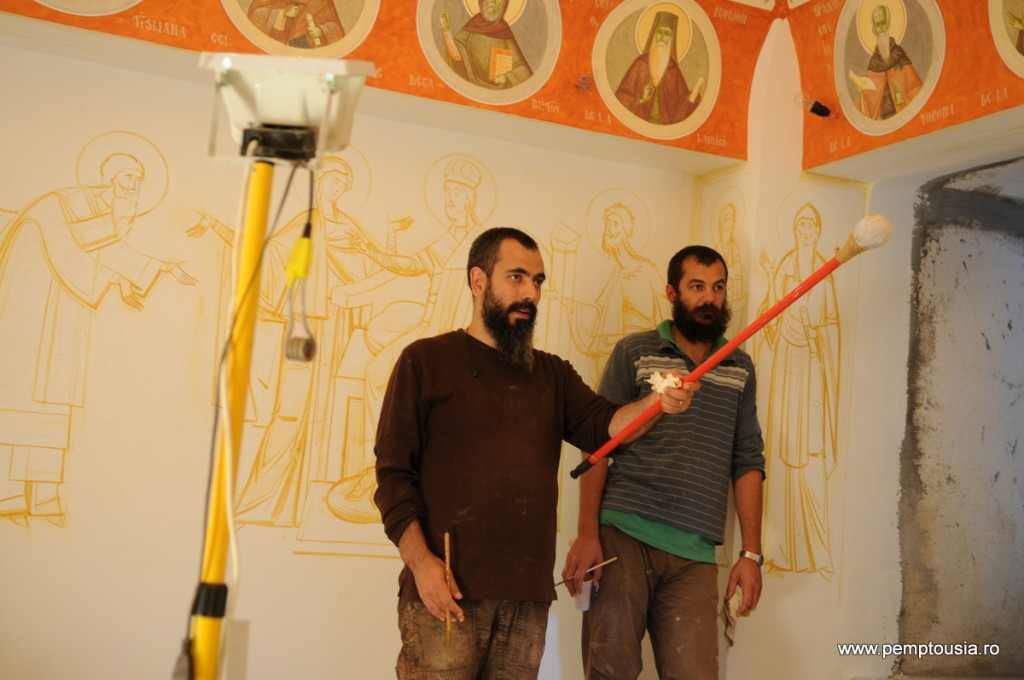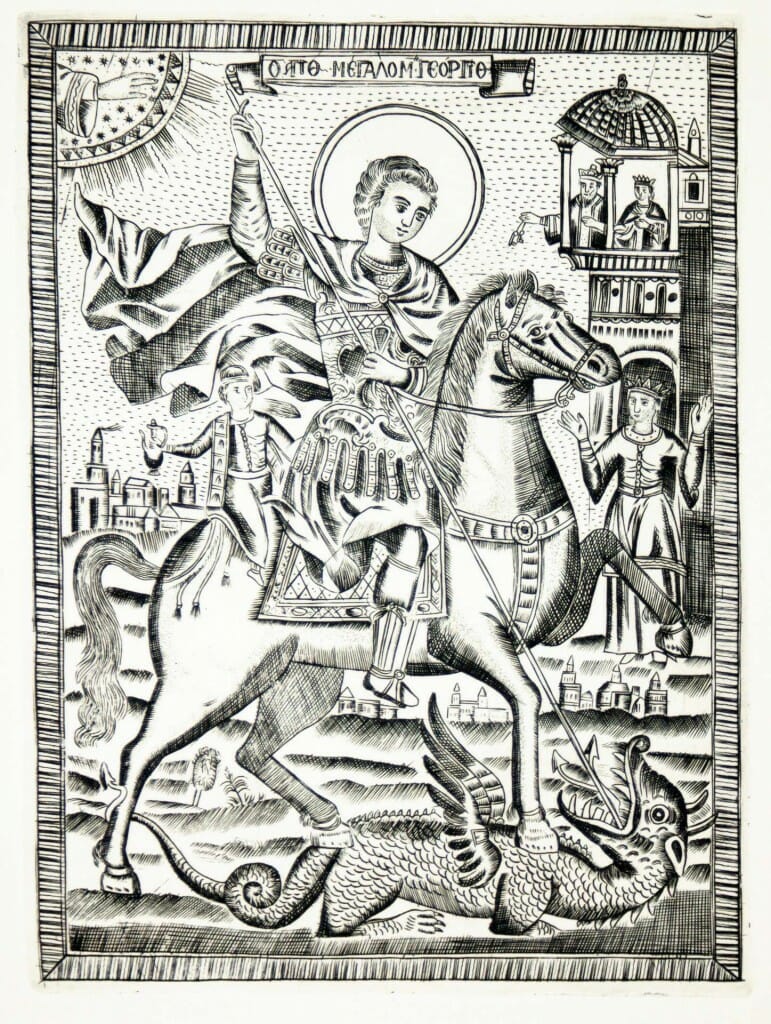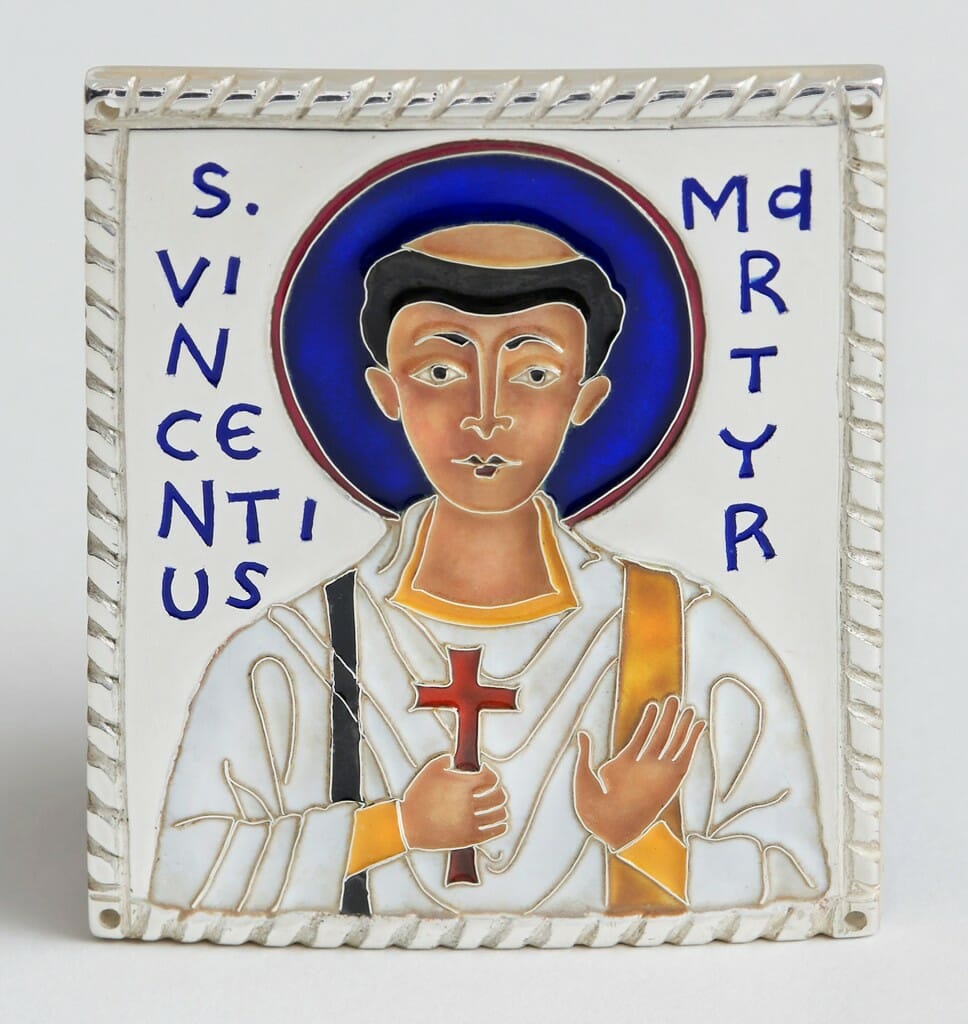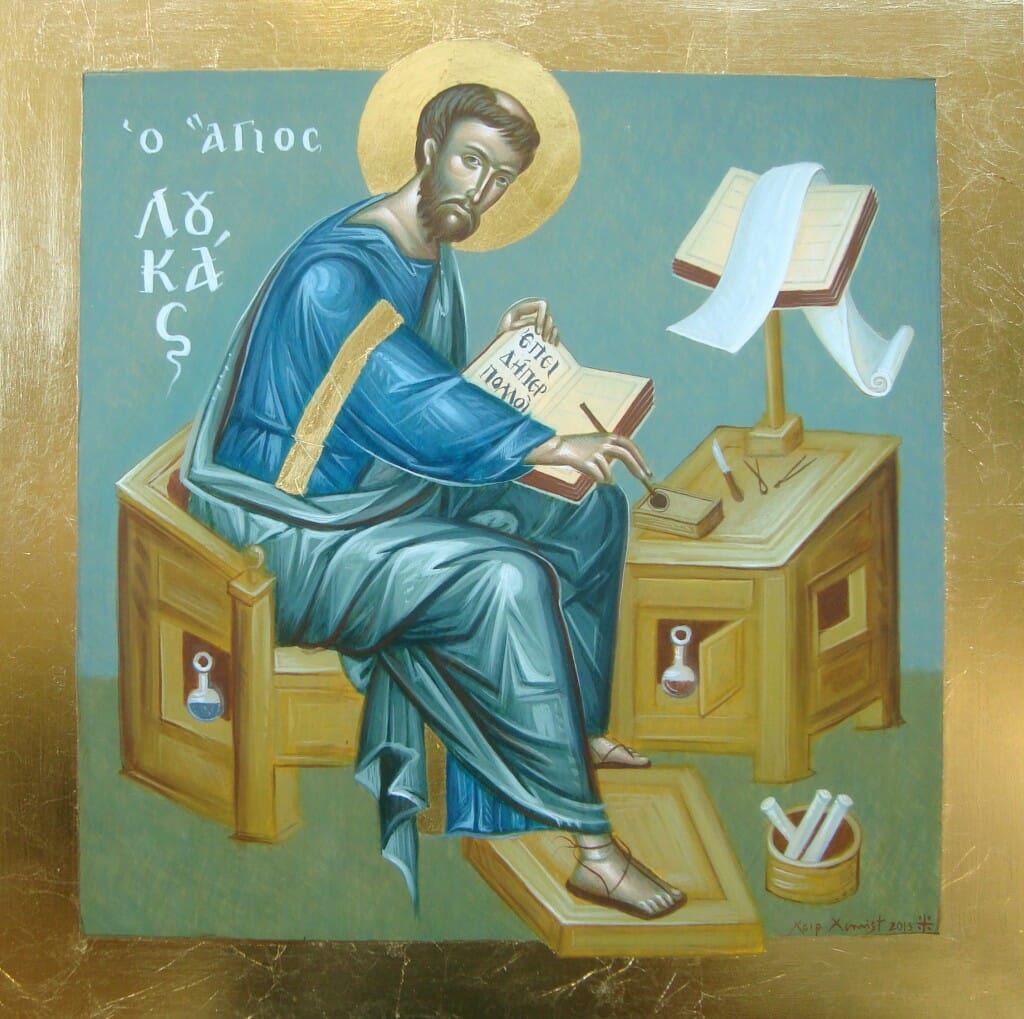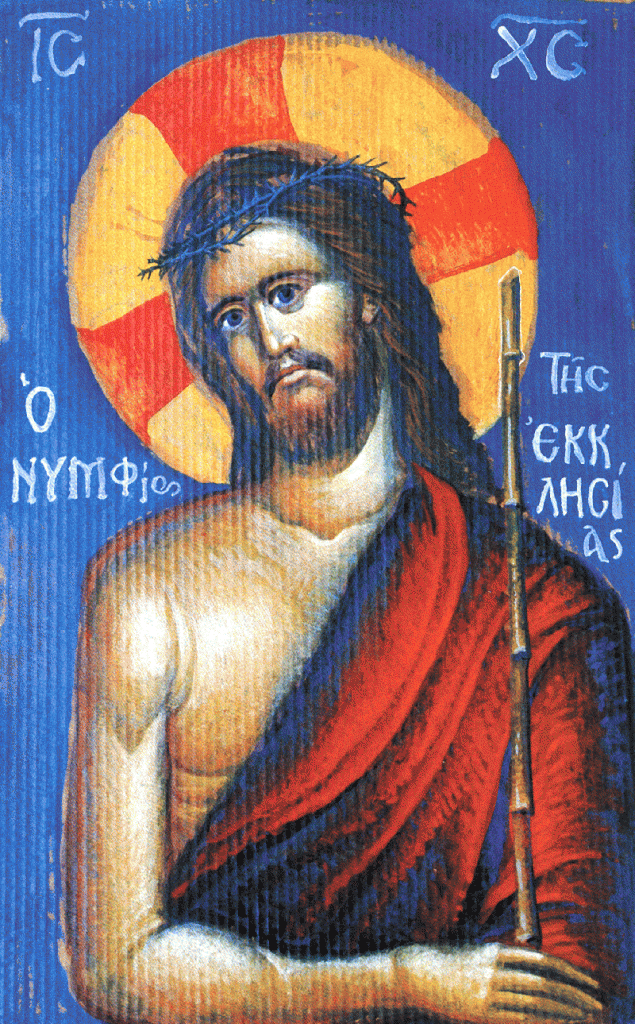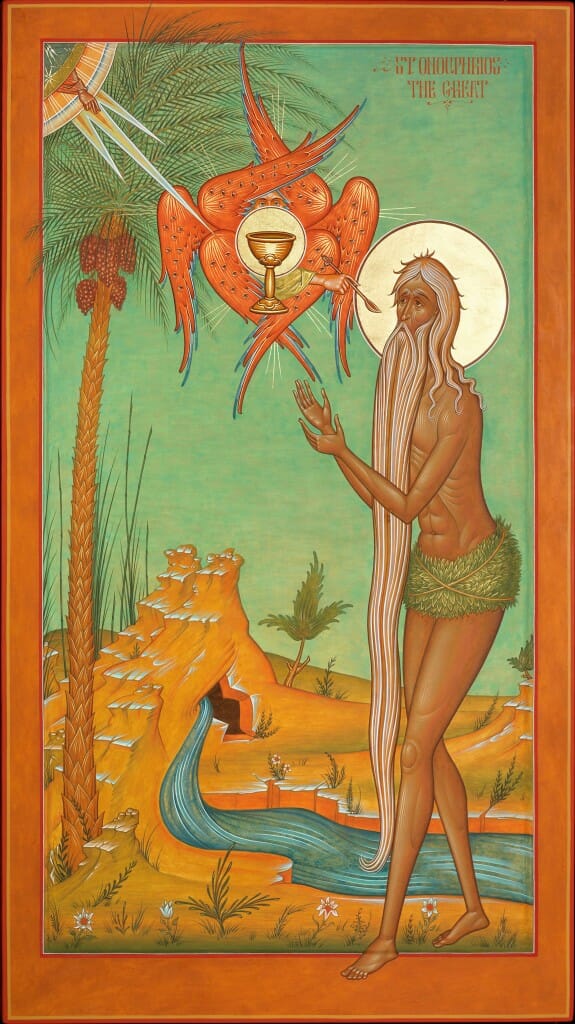Iconography
The Transfiguration in Shadow.
Last year I was asked by a patron to carve a large icon of the Transfiguration. She said: “I am curious to see how you will do that.” I understood immediately what she meant, and her comment for me went to the core of what icon carving attempts to grapple with. So much of Orthodox theology, especially since St-Gregory of Palamas…
Continue reading »Icon Conference and Exhibit at the Museum of Russian Icons
The Museum of Russian Icons in Clinton Massachusetts is hosting it’s 9th International conference of Iconographic Studies this June, 11- 13. The topic is “Icons and Iconology.” The Museum, since it’s inception in in 2006, has worked hard to establish itself as a North American center for Icon studies. Towards this goal, the museum website…
Continue reading »The Archbishop Dmitri Memorial Chapel – An Interview with Iconographer Vladimir Grygorenko
The Archbishop Dmitri Memorial Chapel is an ongoing project at St. Seraphim Cathedral in Dallas, Texas. It is especially interesting as it is a chapel designed to honor the earthly remains of the locally venerated archbishop. We are pleased to offer this interview with master iconographer Vladimir Grygorenko, who designed and painted the chapel. A.…
Continue reading »Sinai Icon Conference at Princeton
Most iconographers are familiar with Kurt Weitzmann, the art historian who “rediscovered” Mount Sinai Monastery. Realizing the historical value of the treasure trove of icons at the monastery, he began a documenting project by photographing all the icons in the monastery. Weitzmann was a professor at Princeton University and the University has continued to support the digitizing of the icon…
Continue reading »The New Romanian Masters: Innovative Iconography in the Matrix of Tradition
(Editor’s note. For some time now we’ve wanted to find a way to present the burgeoning iconography which is currently happening in Romania. And so after a bit of searching, this article introducing the new school of iconography was written especially for OAJ by Mother Atanasia (Văetişi) of the Stavropoleos Monastery in Bucharest in collaboration with my own parish priest Fr.…
Continue reading »The Printmaking Tradition on Mount Athos
Editor’s note: We would like to introduce our new contributor, Markos Kampanis. Markos is a prominent artist and iconographer in Greece. He has a particular expertise in Athonite murals and prints and will be sharing his knowledge in a series of articles. Artistic tradition on Mt Athos is usually associated with painted icons and murals.…
Continue reading »A Cloisonné Enamel Reliquary Icon of Saint Vincent of Zaragoza
Editor’s note: This article continues Aidan Hart’s recent article about a reliquary for Saint Vincent of Zaragoza and details Christabel Anderson’s process for making the cloisonnée icon. This article contains a background to the history and technique of cloisonné enamel and a description of the processes used in making the cloisonné enamel icon plaque of Saint Vincent…
Continue reading »An Interview with Iconographer Federico José Xamist
Federico José Xamist is a remarkably talented young iconographer of whom we have recently become aware. His work exemplifies icon painting as a fresh and living tradition. We offer the following interview to introduce this exciting artist to our readers: Gould: Federico, you grew up in Chile. How did you come to live in Greece? J. Xamist: When I…
Continue reading »Contemporary Art as Theophany
To-day in England we think as little of art as though we had been caught up from earth and set in some windy side street of the universe among the stars. Disgust at the daily deathbed which is Europe has made us hunger and thirst for the kindly ways of righteousness, and we want to save our souls.…
Continue reading »On the Gift of Art…Part IV: Challenges After the Clash
This is post 4 of 5 in the series “On the Gift of Art… But, What Art” Fr. Silouan explores points of contact and departure between traditional visions of art and contemporary art as we know it today. On the Gift of Art… But, What Art? On the Gift of Art…Part II: The Traditional Doctrine…
Continue reading »